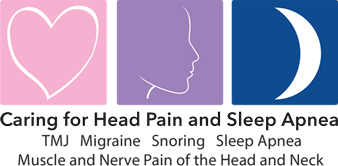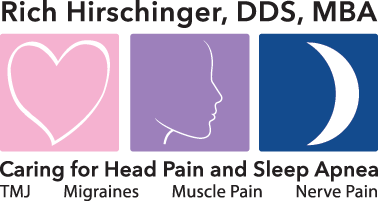

Diplomate American Board of Orofacial Pain
9615 Brighton Way, Suite 323
Beverly Hills, CA 90210
888.981.8981
 What is a Headache in Beverly Hills?
What is a Headache in Beverly Hills?
More About Headaches
The International Classification of Headache Disorders (ICHD) is published by the International Headache Society to classify and diagnose types of headaches. According to this classification system, there are four primary types of headaches: migraines, tension-type headaches, cluster headaches and other headaches sensed in the cranial nerves. Different types of headaches may respond to different types of treatments as they originate by various causes.
Migraine
A migraine is a moderate to severe headache often accompanied
by nausea, vomiting, increased sensitivity to sound, and increased
sensitivity to light. The severity, duration and frequency of migraine
pain vary from one attack to another in the same person.
There are four possible phases of a migraine, and all are not
necessarily experienced. The first phase, called the prodrome, may occur
hours or days before the migraine, and consists of an altered mood
excessively sleepiness, stiff muscles and other symptoms. The second
phase, called an aura, which may immediately precede the attack, occurs
in 20 to 30 percent of migraine sufferers. An aura can be motor or
sensory, including a disturbance of vision such as flashes of light or
zigzag lines, or a feeling of pins and needles in the hand, arm, face
and mouth. The third phase of a migraine is the pain or headache phase.
The pain may occur on one side of the head or both and usually lasts
from 4 hours to 3 days. The final phase of a migraine, a postdrome, may
occur for some patients. It may include a sore feeling where the
migraine pain was accompanied by feelings of tiredness, weakness and
cognitive difficulties. Six percent of men and 18 percent of women are
estimated to experience a migraine headache in their lifetime.
Tension-type headaches
These are the most commonly occurring type of primary headache. Up to nine out of ten adults will have or have had a tension-type headache in their lifetime. A tension-type headache is experienced as pain of varying intensity in the head, face and neck, often described as a feeling of tightness or pressure.
Cluster headaches
This rare primary headache type only effects 0.1% of the population, most commonly men in their late 20's. The piercing pain is felt in the eye region, typically on only one side of the face without changing sides. A cluster headache usually lasts between 30 and 90 minutes, but can occur for up to three hours. They are often recurrent, happening regularly at the same time of day or night. Many people who suffer from cluster headaches report between one to three headaches per day during a period.
If you suffer from frequent headaches, finding out the type of headache causing the majority of symptoms is a critical part of treating the underlying causes of the pain. Learn about the major causes, symptoms and treatments for various headache types here, and consult Dr. Hirschinger before starting a treatment plan.





